Secret Wonder: Presenting the Marañón River
The Marañón River has remained so secret that most Peruvians still do not know the wonders it beholds! Its reputation is growing as ‘The Grand Canyon of South America’, however it still receives very few visitors outside of hard-core rafting & kayaking circles. The Marañón Waterkeeper is letting the cat out of the bag, so to speak. In 2017 they are filming an episode for Peruvian sustainable travel show, ‘2 en Ruta’ which will highlight this valley as the international wonder that it is.
Flowing from its source lake, Laguna Carhuacocha in the Cordillera Huayhuash (another secret wonder in its own right), the Marañón River dissects Peru in two, flowing through a wild and scenic canyon before turning into the Amazon River. Did we mention that the Marañón River is the largest source to the Amazon River? The Marañón is a key part of the largest and most diverse ecosystem on the planet and the Marañón Valley is home to astounding numbers of endemic species.

It runs through a deep, rugged canyon, nestled between jaw dropping Andean peaks sometimes several thousand meters tall! Unlike many tourist destinations, it is difficult to visit the Marañón just for a day trip. For those wanting one of the most unique and wild experiences in Peru, you must commit to several days floating on a raft. Floating past pristine beaches, listening to wild bird calls, witnessing millions of years of history layered into the canyon walls. For days and days just float; watching as the canyon passes by and the landscape unfolds before your eyes. This is a trip for those who love the wild, who love their own space and who don’t want to see another tourist for their entire journey. If that’s you, then welcome to the Marañón.

Marañón River Highlights
There is a magic which happens when you decide to undertake a river journey. Life becomes simple; there is only one way to go and that is downstream. Unlike hiking, cycling or driving you leave absolutely no trace, no road, no path, not even footprints. The river will deliver you to your destination and afterward there will be no sign you ever passed by.

The Upper Marañón landscape passes through extremely rare seasonally dry tropical forest. It is an almost desert like landscape (Were you expecting deep, lush rainforest? Think again!). You won’t need a rain jacket; it simply does not rain throughout the dry season. Worried about drying clothes after a day on the river? Just hang them out for five minutes and the warm dry breeze will take care of that.
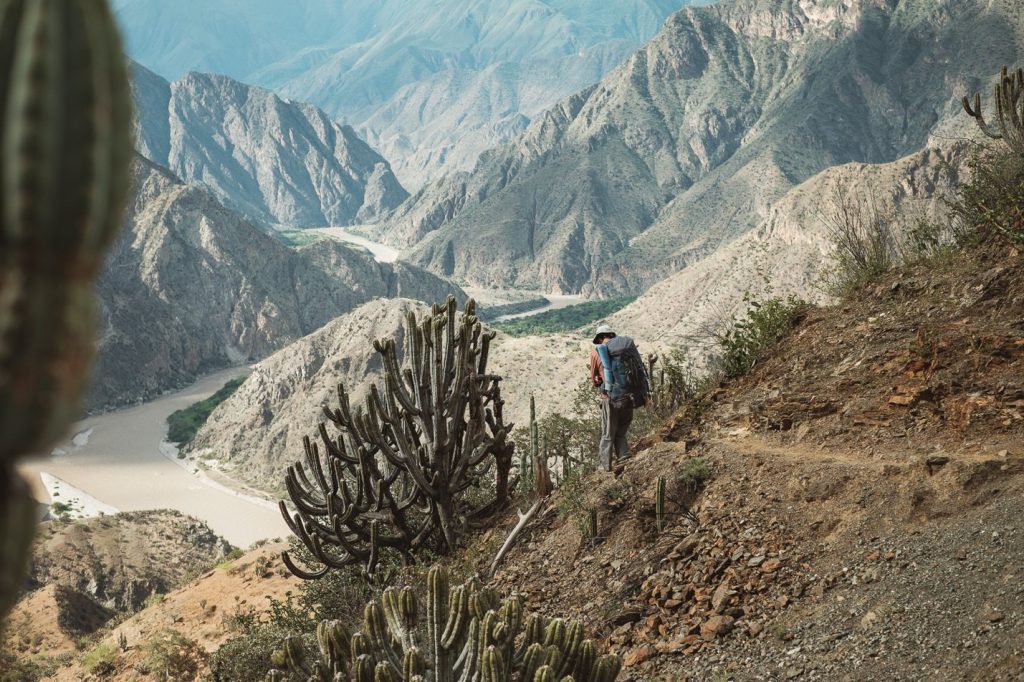
The Marañón has many side canyons to explore, such as the Llanten Canyon. Small creeks cut deep canyons into to the side of the valley as they cascade down from the Andes on either side. These make for perfect side trips to take a break from all that floating downstream.
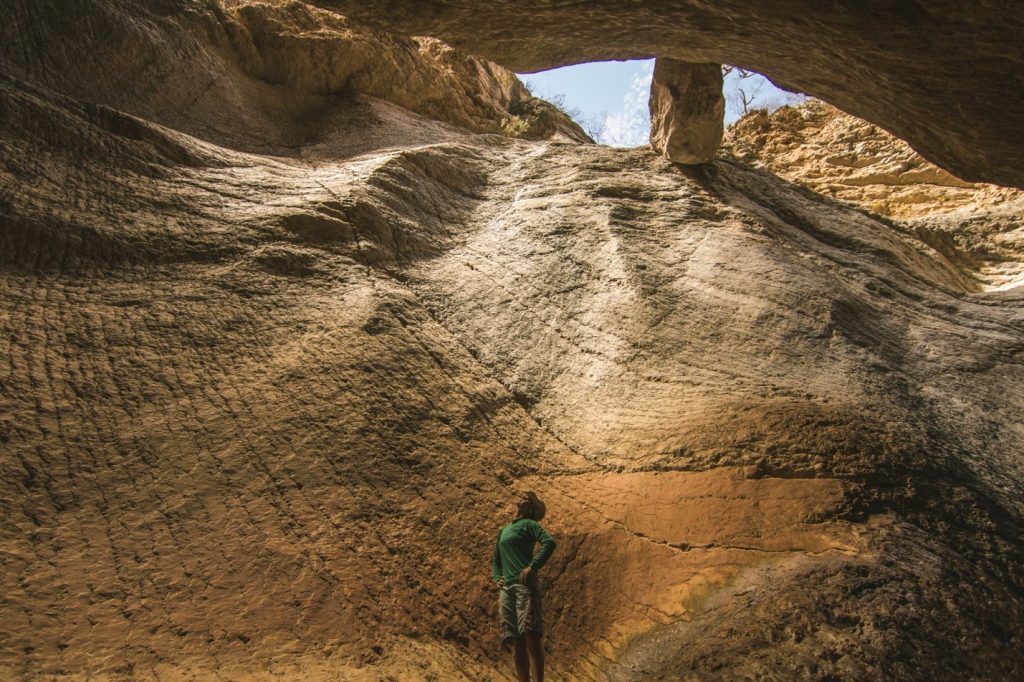
Pre-Incan ruins overlook the river from rocky outcrops, such as those at Playa el Cura, eluding to the long history of this river canyon. Several self-sustaining communities such as Mendán and Tupén welcome tourists for lunch dinner, or just a refreshing sip of coconut milk. These villages are a glimmer into the simplicity, beauty and challenges of life disconnected from the modern grid.
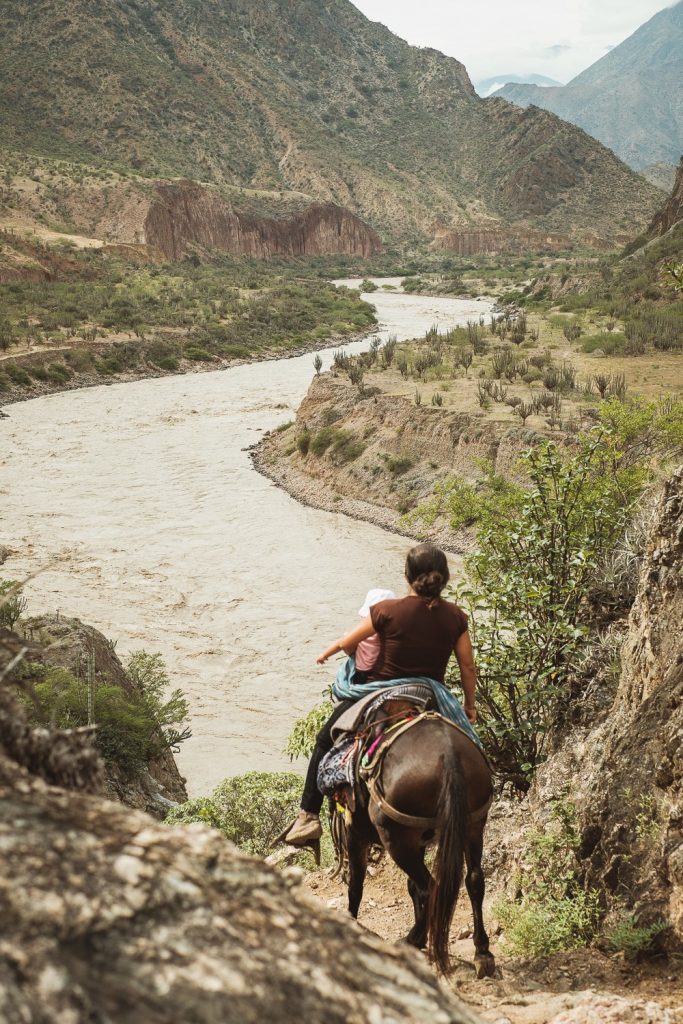
Many lucky visitors have reported sightings of river otters (nutrias), Puma and some of the most elusive bird species in Northern Peru. The Marañón is noted for endemic species, with diversity comparable to that of Galapagos! Keep your eyes peeled as you float by, the advantage of non-motorized river travel is that there is no sound to disturb the wildlife as you approach.
This ever changing landscape reaches its climax at the cusp of the lowland Amazon. Dry forest is dotted with wetter, greener foliage and waterfalls cascade down from the mountain tops above. You can walk 5 minutes from your relaxing beachside camp, to an exclusive, deserted pool fed by trickling waterfall along with million dollar views over the river valley below.
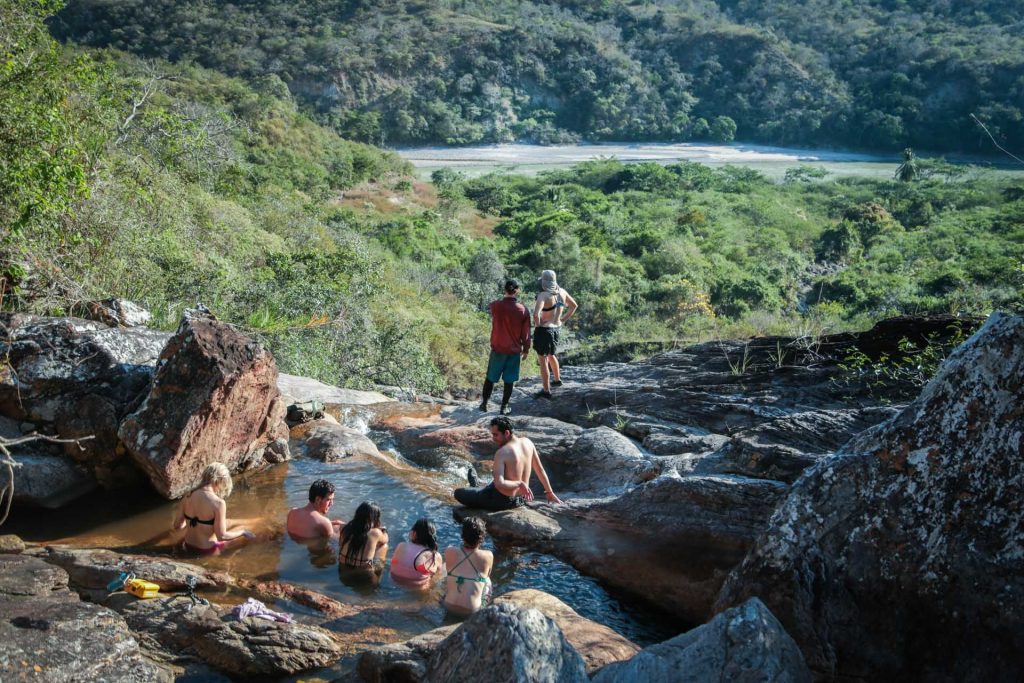
Camping for days on end, on stunning, deserted beaches you will never want to leave this paradise. The advantage of riverside camping, is that we can always load a few luxuries onto the rafts. Cold beer? A glass of wine? Some of the best cheeses from Peruvian highlands? Waking to the sound of dozens of distinct bird calls is an impeccable way to start the day.
Best Way to Visit the Marañón in Peru
Lima is the base hub of all exploratory tours to the Marañón, whose springboard lies about 500km to the north of the capital. As a base, Cajamarca is just stunning. It is a charming hub in the center of sprawling farmlands through highland Peru. Rolling hills, the best cheeses in the country and a collection point for locally grown Cacao and Coffee beans. Once you’re here, you’ll feel like you are getting the real Peruvian experience.
You can fly in to Cajamarca on a national flight, or take the enchanting drive through the Andes and up onto the highlands, this way you will really gain an appreciation of these incredible mountain ranges! At the end of your river journey, you can fly back to Lima from Jaen, the hub of Northern Peru.
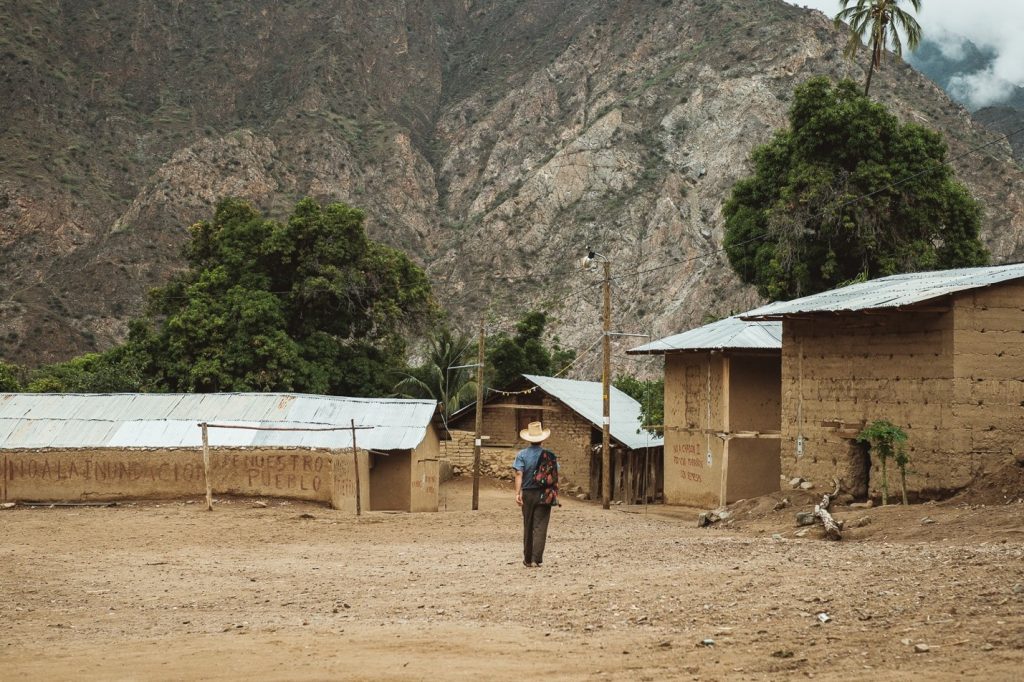
Unless you are an experienced whitewater enthusiast, you will want to organize your Marañón tour with professionals who have all the equipment and knowledge necessary to navigate the river. These companies also organize permissions to pass by the riverside communities, these fees also contribute to sustainable development within each of these riverside towns. Because all the gear is loaded onto rafts, you will not need to use any porters, donkeys or horses. Aside from paddling the raft through some of the larger rapids (generally an enjoyable class III) you will be able to relax and enjoy your surroundings.
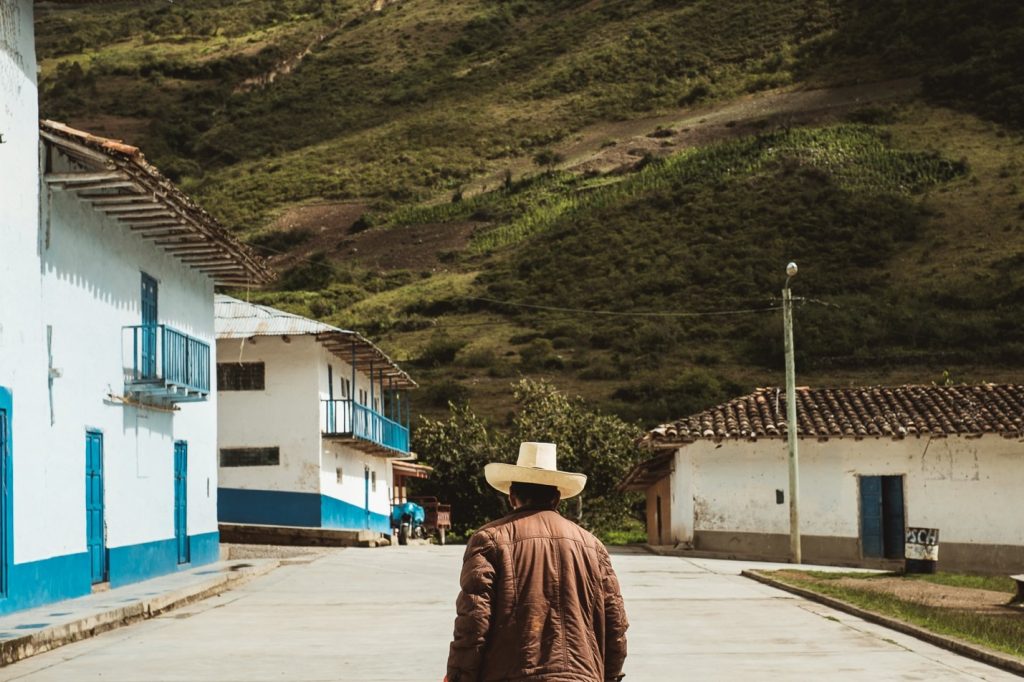
How Long Should You Spend on the Marañón
A week-long river journey is the minimum amount of time to pass through one of the Maranon’s stunning canyons, and have time to enjoy the view and a bottle of wine along the way. Some diehards for adventure spend anywhere up to 30 days navigating this geological wonderland, exploring side canyons, hot springs and ruins. The only pre-requisites for these river journeys is a basic swimming ability and good level of fitness. Once you get into the rhythm of navigating the river, camping on a stunning riverside beach then repeating it all the next day, you will never want to leave. A week long adventure will give you time to make your way through 140km of stunning Marañón Canyon.
Best Time of Year in the Marañón
If you’re an enthusiast, any time of year will give you an incredible and stunning journey down the Marañón. There is however an optimal time for those of us who like perfection. For clear skies, good water levels, warm weather and almost zero chance of rain you should travel to the Marañón between May and November.
What to Pack When Visiting the Marañón in Peru
Unless you are a professional, you will want to join a guided trip where all your whitewater and camping equipment will be provided.
– A small dry bag or peli-case to carry your camera, water, sunscreen and daily essentials
– A sleeping bag that’s light and compact, rated to about 5 degrees Celsius
– Quick dry shirt & shorts offering sun protection throughout sunny days on the river, along with sandals or river shoes while on the river.
– Set of clothes for around camp in evenings (only need to bring a light jacket if it cools off slightly in the evening).
– Cap, sunscreen and sunglasses,
– Hiking shoes or sandals for that are well worn in for side hikes and use around camp.
– Personal first-aid kit, including medications you’re taking
You should probably pack a camera as well; once you have floated past a stunning beach or canyon wall there is no paddling back upstream for a second look…
Guest article written by Benjamin Webb, Interntional Coordinator of NGO Marañón Waterkeeper. In July 2017, Marañón Waterkeeper is partnering with Peruvian Travel Show‘2 en Ruta’ to create an episode to promote the natural and cultural heritage that exists on the Marañón River. This river is under threat from unsustainable development and requires a new valuation to protect all the species and people which rely on it. We can promote this by highlighting its beauty to a wider audience. Through responsible travel visitors can have an enormous impact on the protection of the last wild rivers on earth. Join us on the river, and be a part of something big this year.
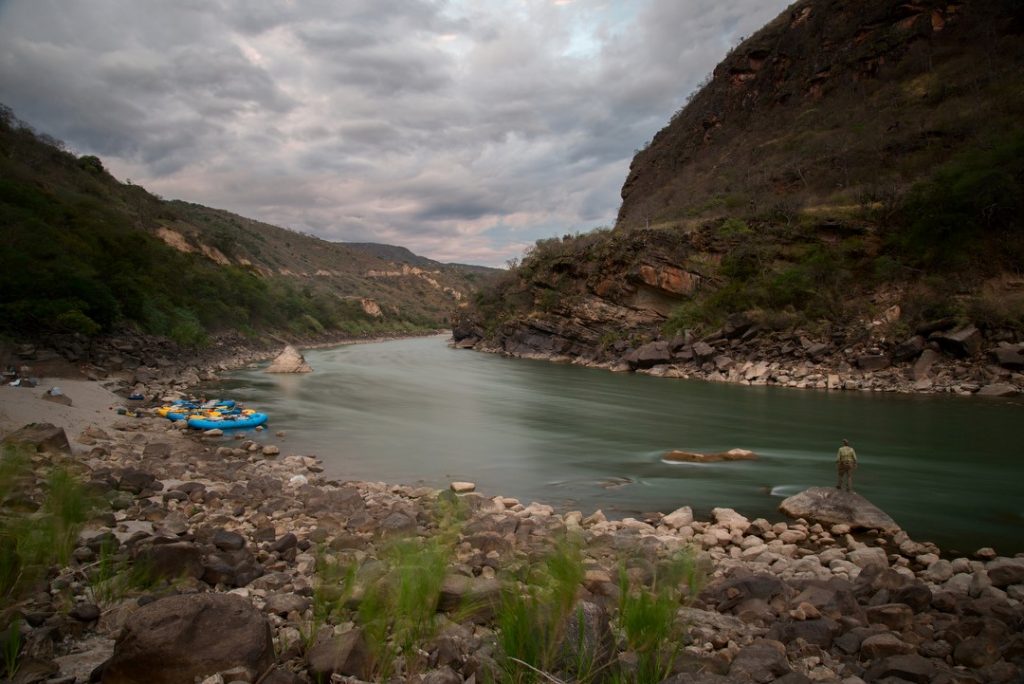
Don’t wait any longer and visit Marañón river. Chimu Adventures offers tailor-made packages to Peru. Click here for more information!

Talk to one of our experienced Destination Specialists to turn your Antarctic, Arctic and South American dream into a reality.
Contact us